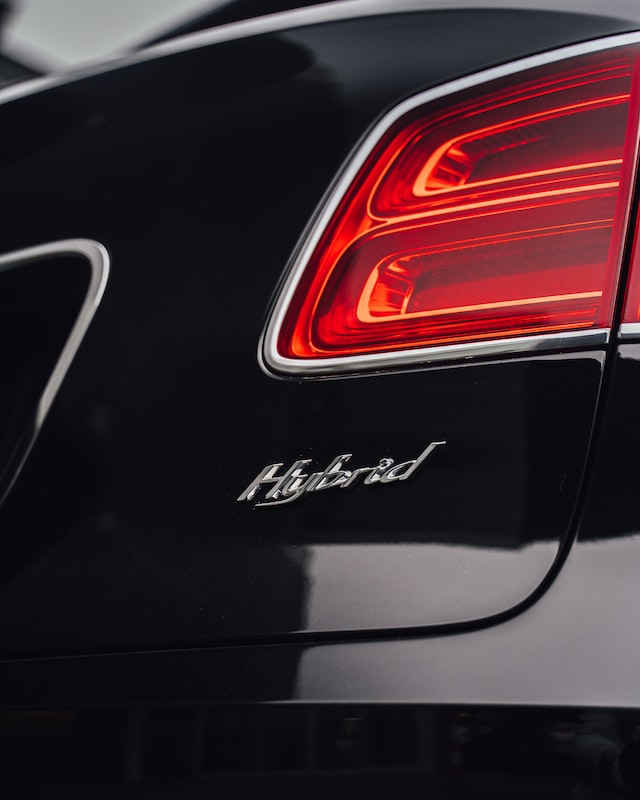Plug-in hybrid vs hybrids: what’s the difference?
Hybrids have been in widespread use since the late 1990s when the Toyota Prius launched in 1997. Since then, two types emerged, the older hybrid car (HEV) and the more recent plug-in hybrid (PHEV). So what is the difference between a plug-in hybrid and a hybrid car?
Read more: A brief history of hybrid cars
Read more: Breaking down 6 myths about hybrids
Read more: Hybrid or EV: which should you switch to?
What’s a hybrid electric vehicle?

Also known as a ‘hybrid’, this vehicle combines a regular internal combustion engine with a battery. It maximises fuel efficiency by using the battery to power the car at lower speeds, then switching to petrol for higher speeds.
It also charges the battery when the regular engine is in use, ensuring that as little energy is wasted as possible. Charing also happens when accelerating or via regenerative braking.
One thing to note however, is that they can be slightly more difficult to maintain as they have more complex engines and components.
In short:
- No need to spend time charging battery, no need charging points
- Less expensive than plug-in hybrids / full EVs
- Don’t have to worry about ‘low-battery’ moments
What’s a plug-in hybrid vehicle?

A plug-in hybrid (PHEVs) is the closest you can get to a fully electric vehicle. Plug-in hybrids, as the name suggests, need to be plugged in to charge. A plug-in hybrid can be charged at home or at work, using a wall socket or a charging station. Fitted with a much larger battery than a hybrid, plug-in hybrids rely primarily on the battery for locomotion and only switch to petrol when the battery dies.
However, it can take anywhere between 2 hours on a 240-volt charger to 5.5 hours on a 120-volt charger. Not exactly fast!
In short:
- More environmentally friendly since the fuel powered engine only kicks it when the battery runs low
- More expensive, but could be cost saving in the long run if you’re not making long drives
Read more: Review: Suzuki Swift Sport 1.4M Mild Hybrid
Read more: Review: Kia Stonic M hybrid
Read more: Review: Hyundai Iconiq Hybrid
Okay let’s compare!
1. Charging and range

One of the main advantages of the hybrid over the plug-in hybrid is that there is no need to charge your car overnight or stop to charge when the battery is dead or dying. Refuelling is not only quick and easy, the ability for the petrol engine to charge the battery when in use is a major benefit to both range and fuel economy.
Conversely, the biggest obstacles to plug-in hybrid adoption is still charging infrastructure. If there are no chargers or places where one can charge, the range of the plug-in hybrid is cut in half; with half the range reserved to return to the charging station. That is unless the driver chooses to rely solely on the petrol engine, effectively making it a regular car.
For example, the Prius Prime has a battery range of 40km which means past the 40km mark the car will switch to the petrol engine. Even so, the savings can be worth it, especially if your commute is shorter than the battery range! You could rely solely on the battery for your daily commute and charge your car at night, saving the petrol for longer journeys.
2. Emissions

If you are environmentally conscious, a hybrid will still have the drawback of having emissions every time you drive, even though it is still less than a regular car. Even if both hybrids and regular cars source their power from fossil fuels, the hybrid will still be more environmentally friendly.
The reason being the petrol car’s internal combustion engine (ICE). A car’s internal combustion engine is on the best days 30% efficient. Meaning only 30% of the energy in petrol is converted into power. Although a hybrid has an ICE, it still converts some lost power into electricity and stores it in the battery for later use, which makes it better than a petrol car.
A plug-in hybrid takes this a little further. It only turns on the ICE only when the battery dies and the battery is charged with electricity from an electric socket. Depending on where you are, the electricity could be generated by a green power station such as solar or wind (best case!). It could also be powered by a thermal power station that burns fossil fuels like coal or natural gas. While this produces emissions, thermal power stations can be up to 99% efficient, meaning very little energy is wasted, which lowers emissions.
So for every litre of fuel burned, a plug-in hybrid gets and uses more of that energy than a hybrid and a petrol car. More bang for your buck! So as long as you keep to your specific plug-in hybrid’s battery range, you can rely entirely on just battery power to drive. This means there will be practically zero emissions when you drive your car!
3. Price

Think of this as almost like being in a metered taxi. Depending on your driving habits, the type of car you choose will impact finances. If you drive longer distances or are always on the move, you’ll have to stop to recharge a plug-in hybrid often to continue using electric power, and that requires more time and planning than just refuelling at a petrol station. But if environmental impact matters more to you, you may be fine with the trade-off.
That said, the upfront costs definitely have to be taken in consideration too. Plug-in hybrids, while more environmentally friendly and closer to being an EV, are definitely more expensive than their normal hybrid counterparts. That’s because they sport newer technology outfitted with advanced software and a larger battery.
Plus, you’ll have to consider the battery which needs to be replaced eventually despite having a long service life. Driving habits can extend or shorten the amount of time between battery replacements, but in either case they cost a bomb.
Inspired to get your next ride?
Hybrid or plug-in hybrids? Take time to sit down, have a think and really consider your driving habits, priorities, and what’s realistic for you. For example, if you don’t live close to a charger or don’t have easy access to one, it simply may not be practical to get a plug-in hybrid – even if you can afford it!
If you’re looking to upgrade your car or make the switch to EVs, start by browsing our list of pre-owned cars and search for your next Carro Certified green car that is as good as new.




